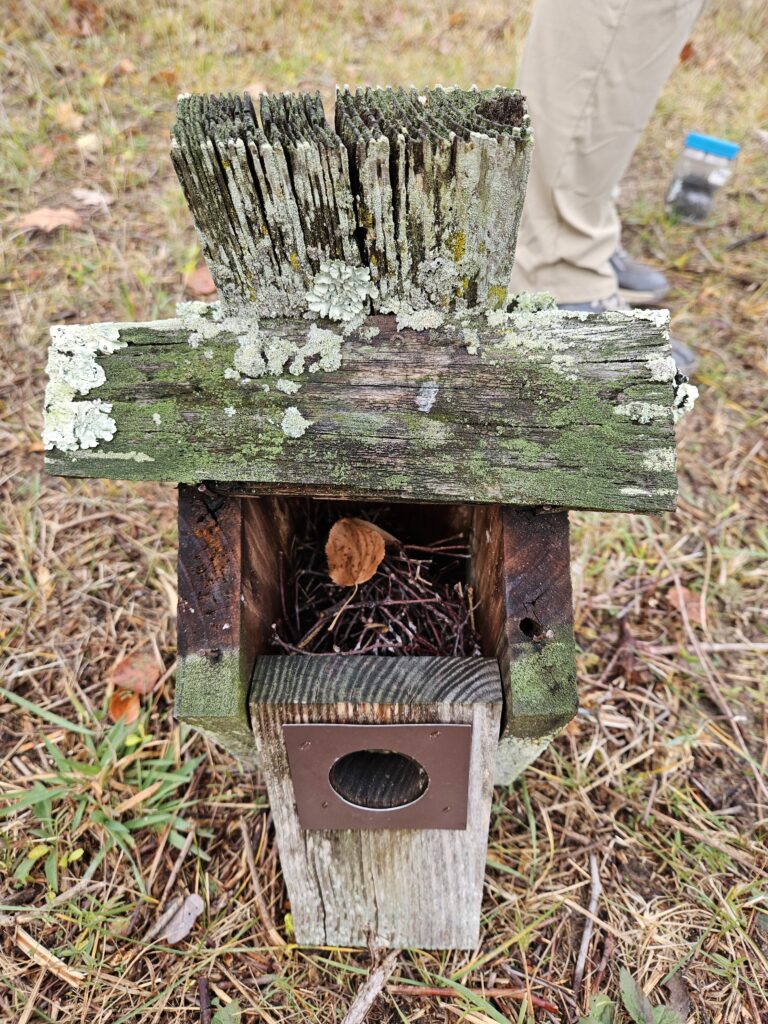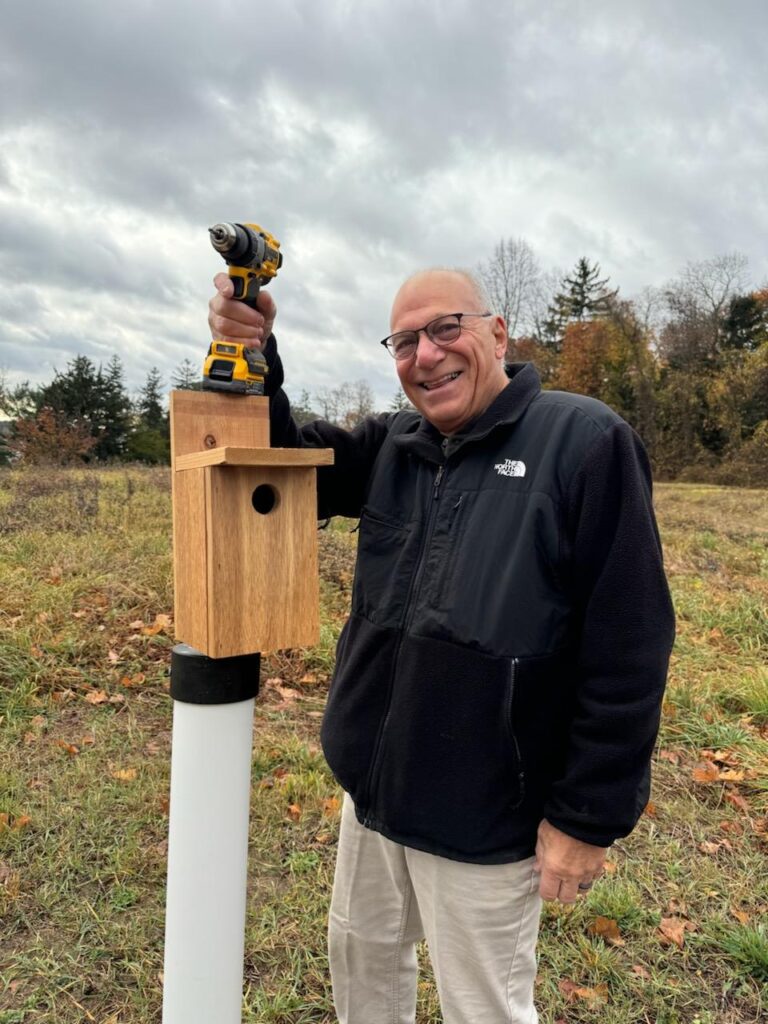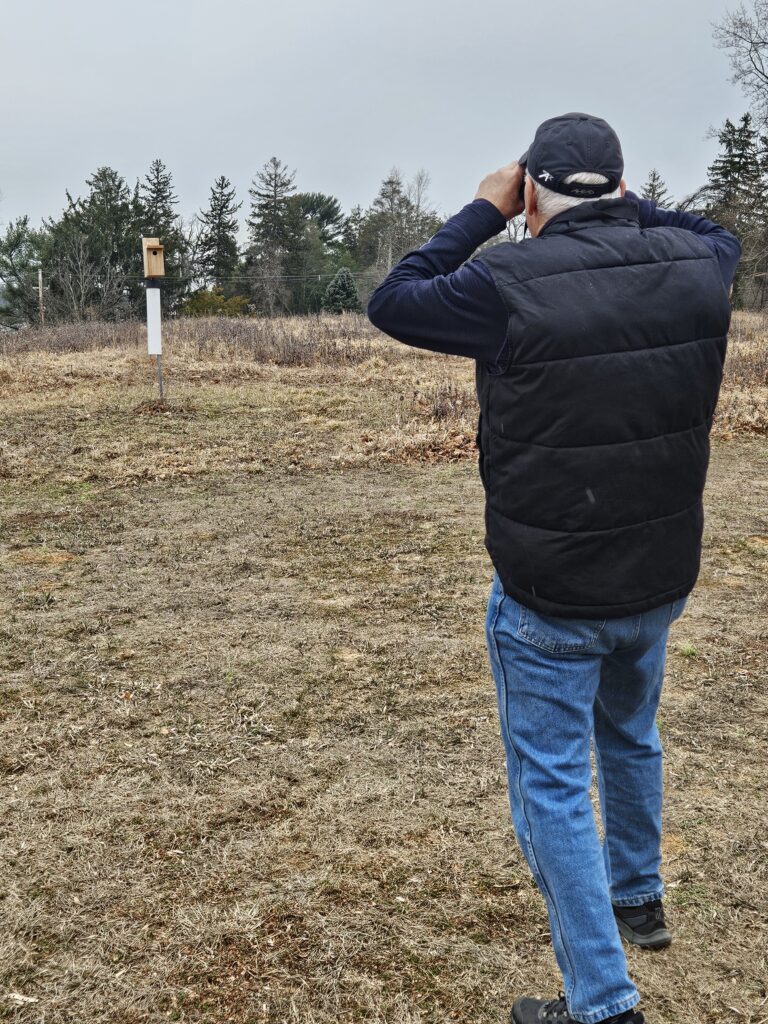Main Content
Eastern Bluebird Nest Box Monitoring
Submitted by: Nick Bernardo, RES 2024, Certification Candidate
Project Host: Monmouth County Huber Woods Park
For as long as I can remember, I have been drawn to exploring nature and understanding the challenges facing our environment. I found my answer in the Rutgers Environmental Steward (RES) Program, which opened a new world of knowledge and provided a clear path to making a difference.
With my Rutgers Environmental Steward coursework completed, I attended my first RES Impact Summit. There, I was inspired by the incredible Steward projects showcasing their dedication, passion, and success stories. For my RES certification project, I decided to monitor Eastern Bluebird nestboxes.
Monitoring bluebirds ended up being a different experience than what I envisioned. For twelve weeks, I checked nesting boxes, hoping to catch a glimpse of Eastern bluebirds raising their young. I was ready for the adventure, binoculars in hand, yet, despite my efforts, I did not see or find a single bluebird in the nest boxes. With each weekly nest box check, I eagerly hoped to spot pale blue eggs or hear the calls of bluebird fledglings. Yet, week after week, I was met with a different reality—house wrens had taken over, their loud chatter filling the air and their twig-packed nests dominating four of the boxes.



At first, I couldn’t help but feel disappointed. I had set out to study bluebirds, yet they remained elusive. However, as the weeks passed, I began to appreciate the subtle nuances of what I was witnessing. I gained insight into the house wrens’ behavior, including their fiercely protective instincts—something I experienced firsthand when I approached their nesting box.
Another lesson I learned from my bluebird-less season was the importance of habitat selection. Bluebirds prefer open fields with scattered trees and shrubs, as these provide both nesting sites and foraging opportunities. They are cavity nesters, relying on natural hollows or man-made nesting boxes to raise their young. Their breeding season typically spans from March to August, with peak activity during the spring. Bluebirds are also called songbirds; they belong to the thrush family, which is known for its melodious singing birds. In areas with high competition for nesting spaces, bluebirds can be evicted by more aggressive species, such as house sparrows, swallows, or wrens. This competition highlights the delicate balance required to support bluebird populations, which often needs a helping hand through habitat management and predator control.
Throughout the certification process, I discovered a different kind of reward. I gained a deeper understanding of bird ecology, met naturalists and volunteers eager to share their knowledge with endless encouragement, and experienced a greater appreciation of the delicate balance of nature, which often has its own plans.
The Eastern Bluebird population has rebounded in recent decades thanks to dedicated volunteers who install and monitor nest boxes, manage habitats, and control predators, which is great news. While I did not witness bluebirds firsthand, I felt connected to a larger movement working to ensure that these native birds have a place in our area for the future.
With a new monitoring season approaching, my dedication to bird and wildlife conservation remains as strong as ever. I will continue to monitor the boxes, adjusting my approach based on what I have learned. Perhaps this season, with the right conditions, a bluebird family will nest in the Huber Woods Park nest boxes.
My experience through the Environmental Steward program has helped me build a trusted network of mentors, including the Naturalist team at Monmouth County’s Huber Woods Park, the N.J. Bluebird Society, a RES alum whose project focused on bluebird monitoring, and the dedicated Rutgers RES team. This invaluable mentor network has generously shared their knowledge and kept me focused on what truly matters: protecting the Eastern Bluebird population.
So, even without a bluebird in sight, this season of quiet observation has taught me that nature does not always follow our expectations—but it always has something to teach us if we are willing to listen.